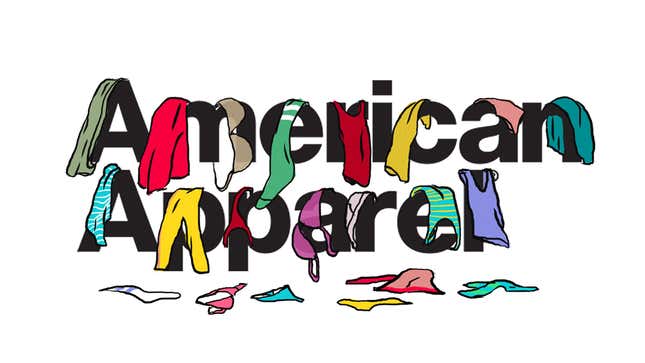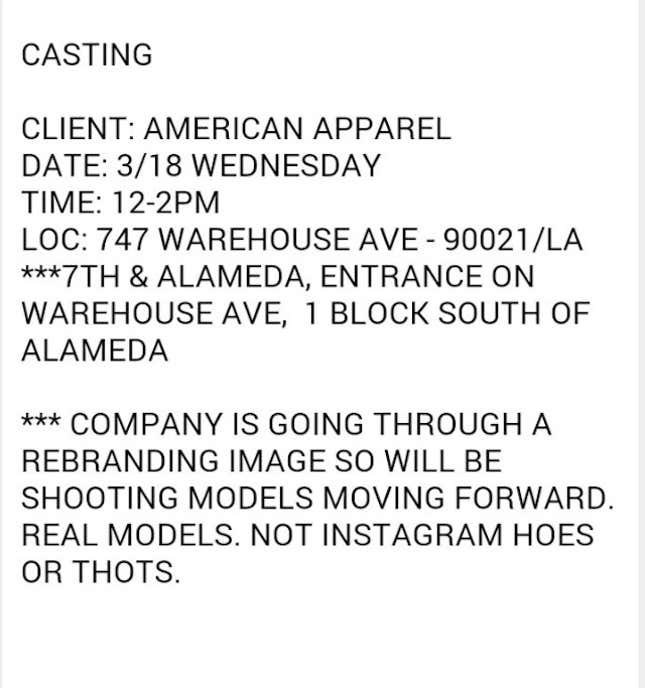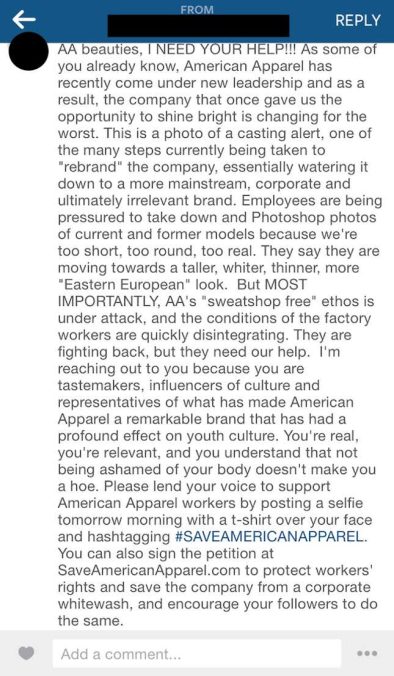What the Hell Is Going On At American Apparel?
Latest

One by one, the remnants of “old” American Apparel have been stripped away. The company recently fired longtime creative directors Marsha Brady and Iris Alonzo—the latter of whom, according to our sources and as corroborated by an earlier report by Fashionista, was canned without warning, explanation, or severance—and now seems to have done away with the title “creative director” altogether. This past Friday, Joey Ng, who worked for the company for seven years and last served as its marketing director, was fired. The week before, photo curator Krista Martin, photographer Kyung Chung, and designer Merrily Lupo were let go.
The firings have come in such abundance and with such regularity that there’s a ghoulish joke now among what’s left of the old guard and its sympathizers. “Every Friday it seems like more and more people who belong to the old crew or have any association with Dov get fired,” an insider said. “[W]e’ve started calling them #FiredFridays.” Indeed, according to a report today from the New York Times, the company has begun laying off about 180 employees, mostly in the manufacturing division. All employees losing their jobs will be informed by Friday.
And Dov, of course, is Dov Charney, the founder and former CEO of American Apparel, a guy who’s not much loved around these parts; we at Jezebel have previously referred to him as “chief troglodyte” and “a 14-year-old on growth hormones.” Charney was ousted in January, and American Apparel, now helmed by CEO Paula Schneider and a Board of Directors controlled by the hedge fund Standard General, is in the midst of a thorough de-Doving that seems to have extended to employees with close ties to the founder. Chung, for instance, was formerly listed alongside Charney as a defendant in a lawsuit against American Apparel, and Lupo is Charney’s ex-girlfriend.
Recent hires haven’t exactly inspired confidence among American Apparel veterans, either. Those additions include Cynthia Erland, American Apparel’s new, already battle-weary senior vice president of marketing, and Thoryn Stephens, the new chief digital officer, whom one source referred to as an “asswipe.” Another said: “They really want people that are just going to agree with the hedge fund’s agenda, even if what they are doing is ethically or strategically wrong.”
Controversy and palace intrigue are as central to the American Apparel brand as metallic leggings. From the time a photo of the 1986 Space Shuttle Challenger disaster found its way onto their Tumblr account (accompanied by the tags #smoke and #clouds) to the time Charney was caught dancing with his dick out for a pair of female employees—not to mention, of course, the several sexual harassment suits aimed at its founder, or the time he masturbated in front of a reporter—the company is, as multiple wary American Apparel employees chose to phrase it, “fun to make fun of.” That’s certainly one way to put it.
Although employees lower in the company hierarchy have been railing against American Apparel for years, the team at HQ has for the most part remained fiercely loyal to the brand. Since Charney’s dismissal in January, however, the nature (and locus) of complaints against American Apparel have shifted significantly—it’s the folks left at HQ who are doing the ranting now. In interviews with Jezebel this month, multiple sources both currently and formerly with American Apparel spoke of a chaotic tug-of-war—driven by changes in creative direction, personnel, and at the factory—between the doggedly independent creative workforce hired by Charney and its new corporate leadership. The picture they painted was of a company graduating from a personality-driven form of dysfunction to a sleeker, more systematized form. The company that was fun to make fun of, they fear, is in danger of becoming too corporate to survive intact.
Earlier this month, three employees filed complaints with the National Labor Relations Board, citing worker intimidation and a ban on speaking to the press. (This past Monday, they appeared to have scaled back on the press policy, as reported by BuzzFeed.) Additionally, a group of Charney supporters within the company sent a series of mass emails under the name #ProDov, criticizing both the removal of Charney and the arrival of Standard General. (One of the anonymous emails took issue with “being taken over by corporate Wall Street guys who don’t care about the company or the brand or the image or its employees.”) “The place is imploding,” Keith Fink, the lawyer for American Apparel employees on two of the complaints, told BuzzFeed earlier this month.
Over the past few weeks, new grievances have emerged. A string of employees have reached out to multiple publications (including this website, the New York Post, and Animal New York) with concerns about the new creative direction of the company. Their tips included a screenshot of an email sent by PhotoGenics Media for an American Apparel casting call that read: “The company is going through a rebranding image so will be shooting models moving forward. Real models. Not Instagram hoes or thots.”

PhotoGenics Agency Director Phira Luon, who sent the email, assumed full responsibility when contacted by Animal New York: “The comment made at the end was made in jest with models whom I have a personal relationship with and did not reflect the views, or directives by the client.”
-

-

-

-

-

-

-

-

-

-

-

-

-

-

-

-

-

-

-

-

-

-

-

-

-

-

-

-

-

-

-

-

-

-

-

-

-

-

-

-









































